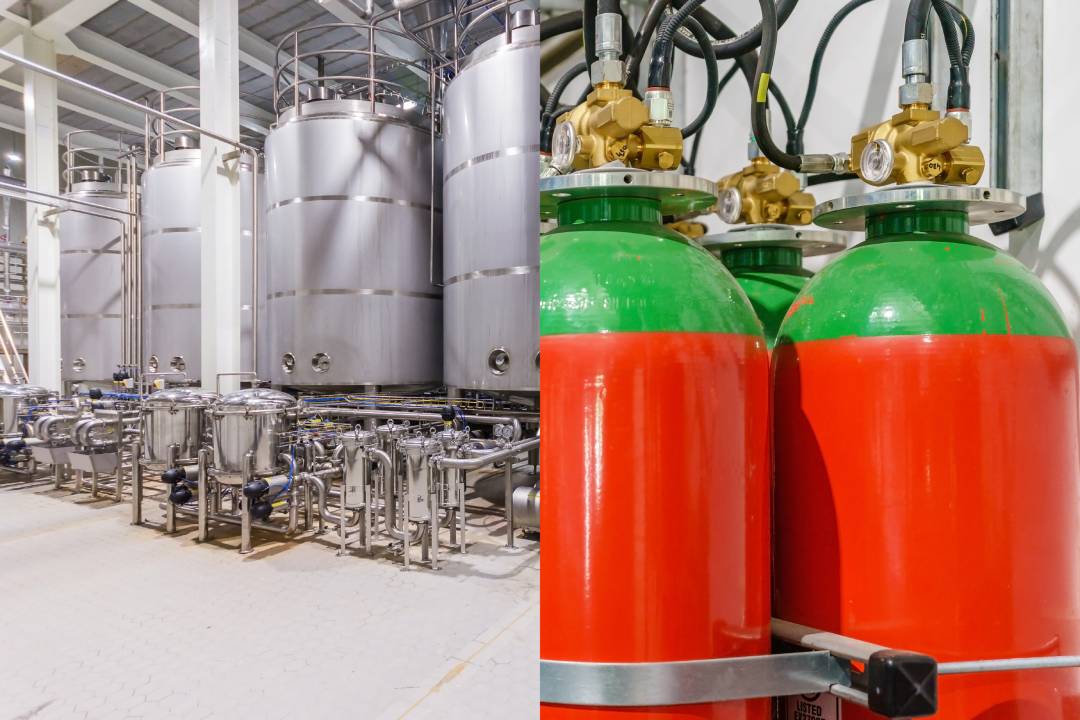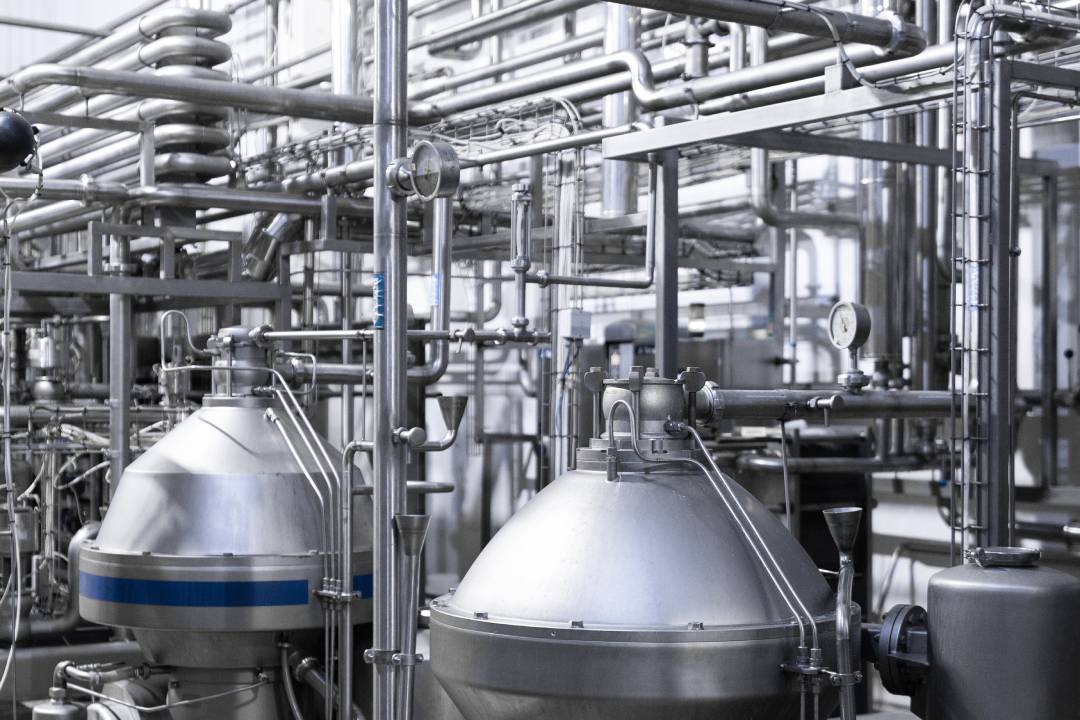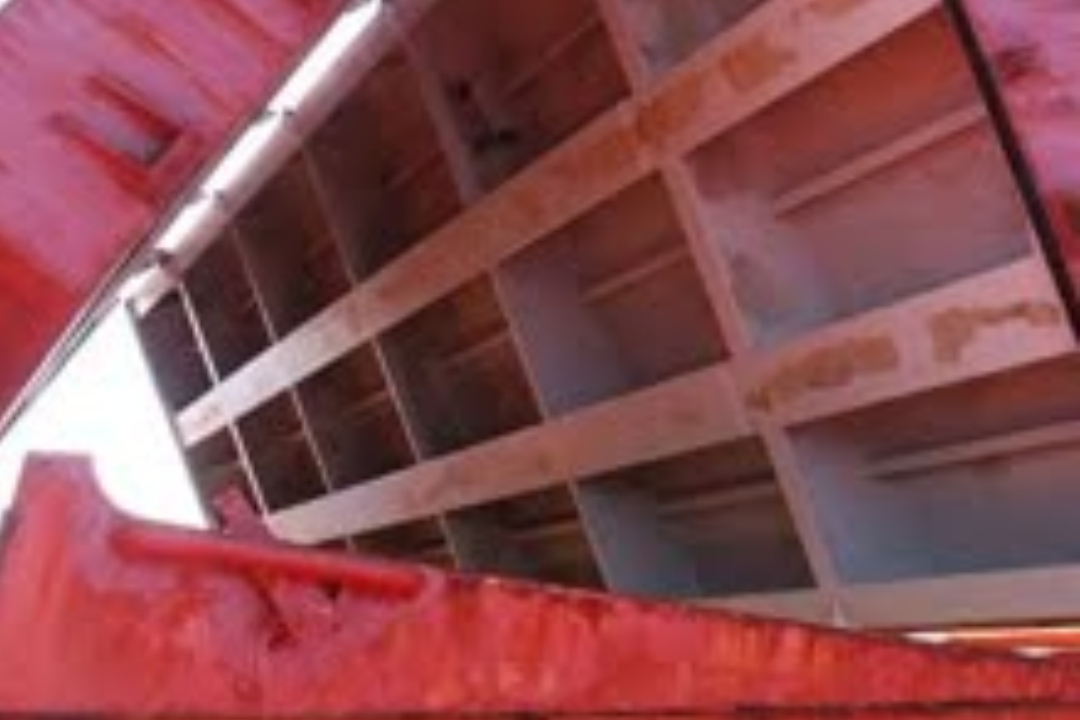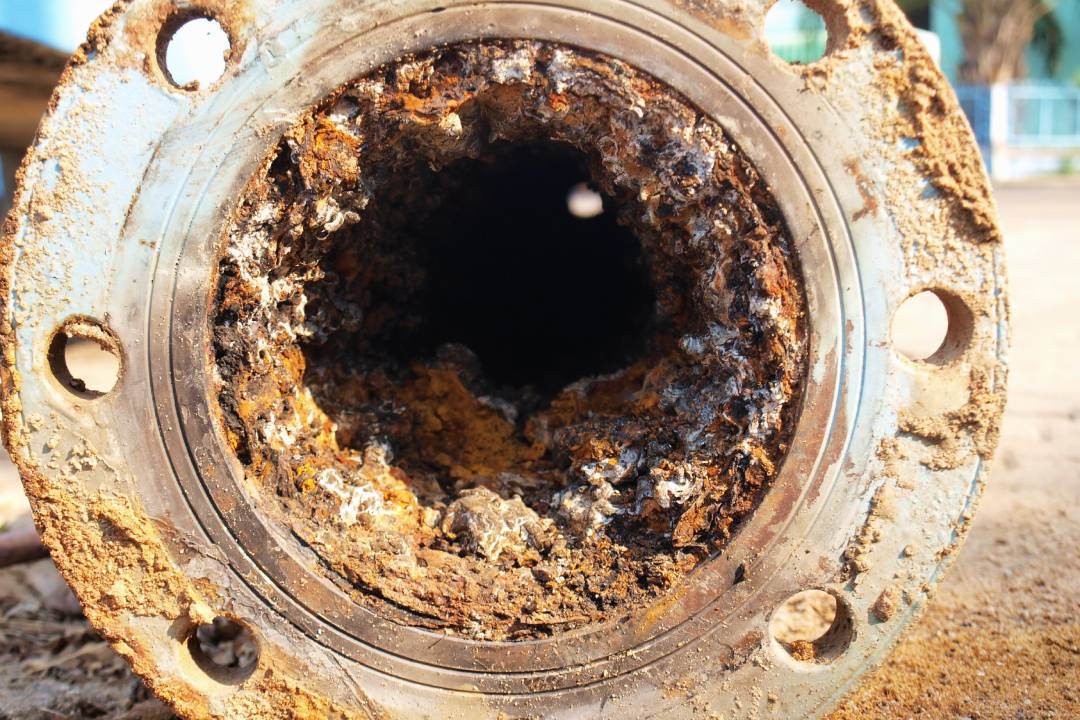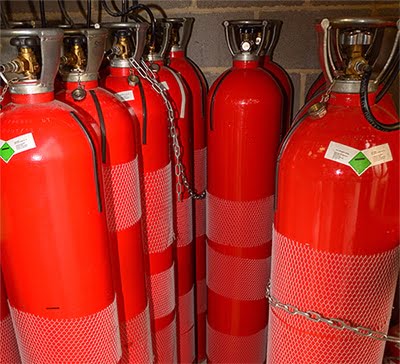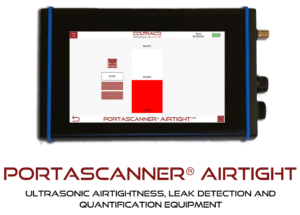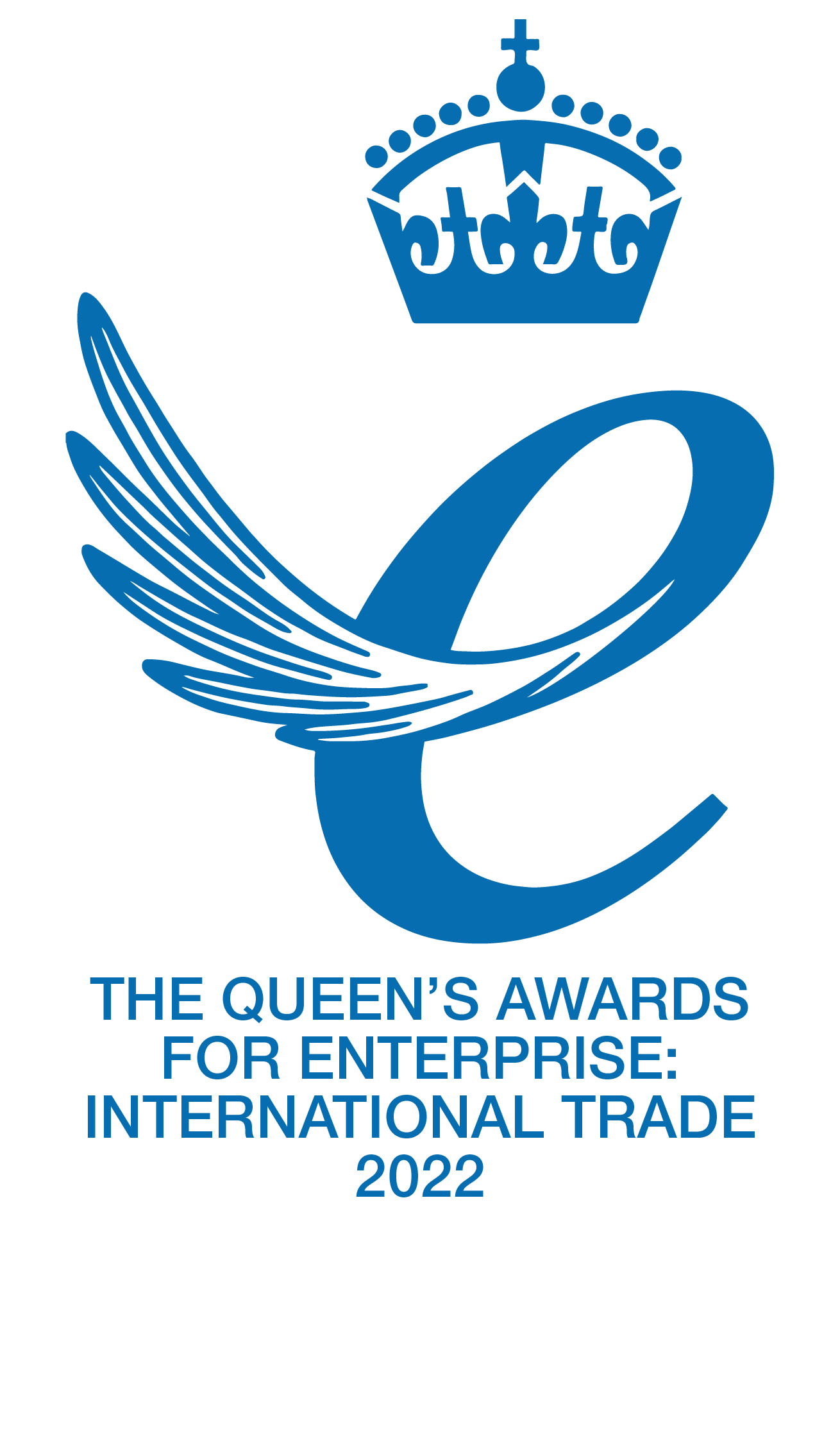Why Choose Coltraco Ultrasonics’ Range Of Ultrasonic Liquid Level Indicators?
Using ultrasonic technology to check the contents of fire suppression cylinders is a highly efficient, noninvasive, and non-destructive process. This approach ensures the safety of personnel and allows inspections to occur without the need for system shutdowns. Ultrasonic level gauges, offering direct reading capabilities, provide a reliable, regulatory-approved alternative for monitoring cylinder contents.
Coltraco Ultrasonics offers a comprehensive range of ultrasonic liquid level indicators designed for precision with an accuracy of ±1.5 mm. These indicators work effectively across various systems, including those made from materials like mild steel, and maintain optimal performance in extreme conditions, including maximum-temperature environments.
The non-invasive and non-disruptive nature of ultrasonic monitoring allows fire suppression systems to be tested while they remain operational. Using our easy-to-use technology, this testing process takes only 30 seconds per cylinder, a significant improvement compared to traditional methods like manual weighing, which requires lifting equipment, multiple personnel, and approximately 15 minutes per cylinder.
Additionally, ultrasonic level gauges provide a cost-effective solution by enabling inspections without system shutdowns. This reduces both the time and labour costs associated with traditional inspection methods.
Coltraco Ultrasonics offers a wide range of level monitoring technology at competitive prices, supported by our “Price Promise,” ensuring the best value on the market. For more information and technical support, please contact us directly.
Marine Engine Room Fire Suppression Systems and Fire Safety
Coltraco Ultrasonics brings over 30 years of experience working alongside critical players in the maritime industry, such as ship owners, ship managers, marine surveyors, port authorities, and classification societies. As of 2021, over 20% of the world’s ocean-going vessels use our technology to ensure the reliability of their fire suppression systems, which is crucial for protecting both life and assets.
Marine fire suppression systems rely on high-pressure CO2 or non-flammable systems using clean agents like FM-200™ and NOVEC™ 1230. Threaded connections and elastomer seals ensure system integrity under pressure.
To suit each vessel’s specific requirements, our comprehensive range of ultrasonic liquid level gauges provides fast, noninvasive methods to monitor suppression agent levels, ensuring systems are fully operational.
Fires often occur in engine rooms or machinery spaces, where heat and pressure are highest, making robust fire protection essential. Our technology, such as the Portalevel® MAX Marine PLUS, allows for quick, accurate inspections, with direct readings of liquid levels in as little as 30 seconds.
Up to 20% of vessels risk CO2 loss due to leakage or accidental discharge, so regular maintenance and reliable level gauges are critical.
These tools allow marine crews to perform essential checks between servicing schedules, as required by IMO SOLAS regulations, preventing catastrophic fire events at sea and protecting business interests, vessel integrity, and the safety of all onboard.
Ultrasound & Ultrasonic Liquid Level Operating Principle
Coltraco Ultrasonics’ liquid-level indicators utilise ultrasonic sensor technology to measure the contents of fire suppression cylinders. Ultrasonic Testing (UT) is a well-established, reliable, and non-invasive Non-Destructive Testing (NDT) method.
Ultrasonic waves, with frequencies above 20 kHz, travel through solid materials and are affected by the structure of the medium they pass through, making them ideal for analysing the contents and integrity of fire suppression systems.
Our Portalevel® units emit high-frequency ultrasound at 1 MHz (1,000,000 Hz), far beyond the range of human hearing. These units use piezoelectric crystals, which exhibit the reverse piezoelectric effect. When an electrical signal is applied, the crystals generate ultrasonic pulses that pass through the cylinder wall. This process involves the piezoelectric crystal emitting high-energy sound waves when mechanically stressed, and those sound waves interact with the fire suppression agent inside the cylinder, whether it be CO2, FM-200™, or NOVEC™ 1230.
Once the ultrasound is emitted, the sensor or transducer listens for returning echoes. These returning signals are sent to the central electronic unit for comparison with calibration signals specific to each cylinder. This allows our liquid level indicators to accurately detect the presence or absence of liquid behind the cylinder wall without disturbing the system.
Ultrasonic waves behave differently based on the transducer and material composition. Some waves travel radially inward through gas (bulk waves), while others propagate along the surface (shear waves). By analysing these interactions, along with advanced signal processing and calibration algorithms, our technology can differentiate between liquid and gas sections within the cylinder, ensuring precise monitoring of fire suppression systems. This makes our ultrasonic testing solution indispensable for maintaining safety and system integrity.
What does the Portalevel® marine range do?
The Portalevel® Marine range operates on the same principles as our fire cylinder range but is specifically designed to suit the requirements of the marine sector. Each unit is portable and includes an extension rod, enabling ship crews and marine operators to inspect cylinders in banked rows quickly.
This innovative technology allows for the non-invasive detection of liquid levels inside single-skinned, welded, or seamless marine fire suppression cylinders without invasive fittings or float devices. It works effectively with various liquids, including water, pressurised gases, clean agents, and halons.
Portalevel® units are versatile and can be used on various container types, materials, and sizes, though they are most commonly used on high-pressure steel gas cylinders. The system eliminates the need to weigh fire suppression cylinders during installation and servicing, reducing labour costs and time.
Instead, once the liquid level is located, the agent’s weight can be calculated using the Portasteele® Calculator. This tool quickly converts liquid height to weight based on cylinder size, agent type, and temperature.
Inspection times are minimised, taking as little as 30 seconds per cylinder, and the system provides easy-to-understand results indicating whether liquid or gas is present. This ultrasonic level sensing technology is beneficial for fire suppression systems. Still, it can also be applied to other monitoring tasks, such as LPG gas levels and water measurements, maintaining operational efficiency while lowering costs.
For more information on how Portalevel® can suit your marine operations, including fittings, valves, and maintenance options, please visit our case studies page or contact us directly.
Marine Fire Suppression System Frequently Asked Questions
What is the most common fire suppression system used on ships?
The most common fire suppression system used on ships is the CO2 (carbon dioxide) fire suppression system. This system effectively suppresses fires in engine rooms, machinery spaces, and cargo holds. CO2 is discharged as a gas, displacing oxygen and suffocating the fire. It is preferred for marine applications due to its effectiveness, non-corrosive properties, and ability to quickly suppress fires without leaving residue. Additionally, CO2 is stored in high-pressure cylinders and can be remotely activated from a control panel, making it suitable for use in confined spaces and critical areas of a ship.
What do the IMO rules say about CO2 fire suppression system inspection?
The IMO requires regular maintenance of CO2 fire suppression systems per SOLAS and MSC.1/Circ.1318. This includes annual inspections of all components, checking cylinders to ensure no more than 10% charge loss, and hydrostatic testing every 10 years. The quantity of CO2 can be determined using ultrasonic means, and with the Portasteele®, the weight of the agent can be determined without weighing. These rules ensure the CO2 system is operational in emergencies, safeguarding the vessel and crew from fire hazards. Regular maintenance and proper inspections are critical to comply with safety regulations.
What are the different firefighting systems on ships?
Firefighting systems on ships typically include various equipment and systems to combat fires at sea. These may include fire pumps, hoses, fire extinguishers, fire alarms, fixed firefighting systems (such as CO2 or foam systems for engine rooms), and portable firefighting equipment. These systems are crucial for ensuring the safety of the vessel, crew, and cargo in case of a fire emergency.
What are the five types of unique suppression systems?
The five types of unique suppression systems commonly used are:
- Carbon Dioxide (CO2) suppression systems
- Foam suppression systems
- Dry chemical suppression systems
- Water mist suppression systems
- Clean agent suppression systems (such as FM-200 or Novec 1230)
Each type of suppression system has specific applications and effectiveness in suppressing fires based on the type of fuel involved and the specific requirements of the protected area.
What is the difference between a firefighting system and a fire suppression system?
The primary difference between firefighting and fire suppression systems is their approach to combating fires. A firefighting system typically refers to the equipment and systems used to fight fires actively, such as fire pumps, hoses, and firefighting agents like water or foam. On the other hand, a fire suppression system is designed to automatically suppress or extinguish fires through fixed systems, such as sprinklers, gas-based suppression systems, or chemical agents.
What is the difference between a water pump and a fire-fighting pump?
The main difference between water and fire fighting pumps is their intended purpose and design. A water pump is a general-purpose pump used for various applications, such as moving water from one location to another for irrigation or domestic use. A firefighting pump, however, is specifically designed for fire suppression and can deliver high-pressure water flow to extinguish fires effectively.
Firefighting pumps are built to meet specific standards and requirements, including the ability to generate sufficient pressure and volume of water for firefighting purposes.
What gas is used in fire suppression systems?
Various gases are used in fire suppression systems, depending on the specific application and the type of fire being suppressed. Some commonly used gases include:
- Carbon Dioxide (CO2): It effectively suppresses fires by displacing oxygen, thus reducing the fire’s ability to sustain combustion.
- FM-200: A clean agent gas that extinguishes fires by removing heat from the fire triangle.
- Novec 1230: Another clean agent gas that removes heat and interrupts the fire chain reaction.
- Inert gases (such as Argon, Nitrogen, and Inergen) reduce oxygen levels in enclosed spaces, inhibiting combustion.
The appropriate gas is selected based on factors such as the type of fire hazard, the size of the protected area, and any environmental considerations.





